A Hungry Mind
The machine learning models used in Helena Sarin’s art are perhaps best understood as metaphors for the workings of her own curious creative intelligence.
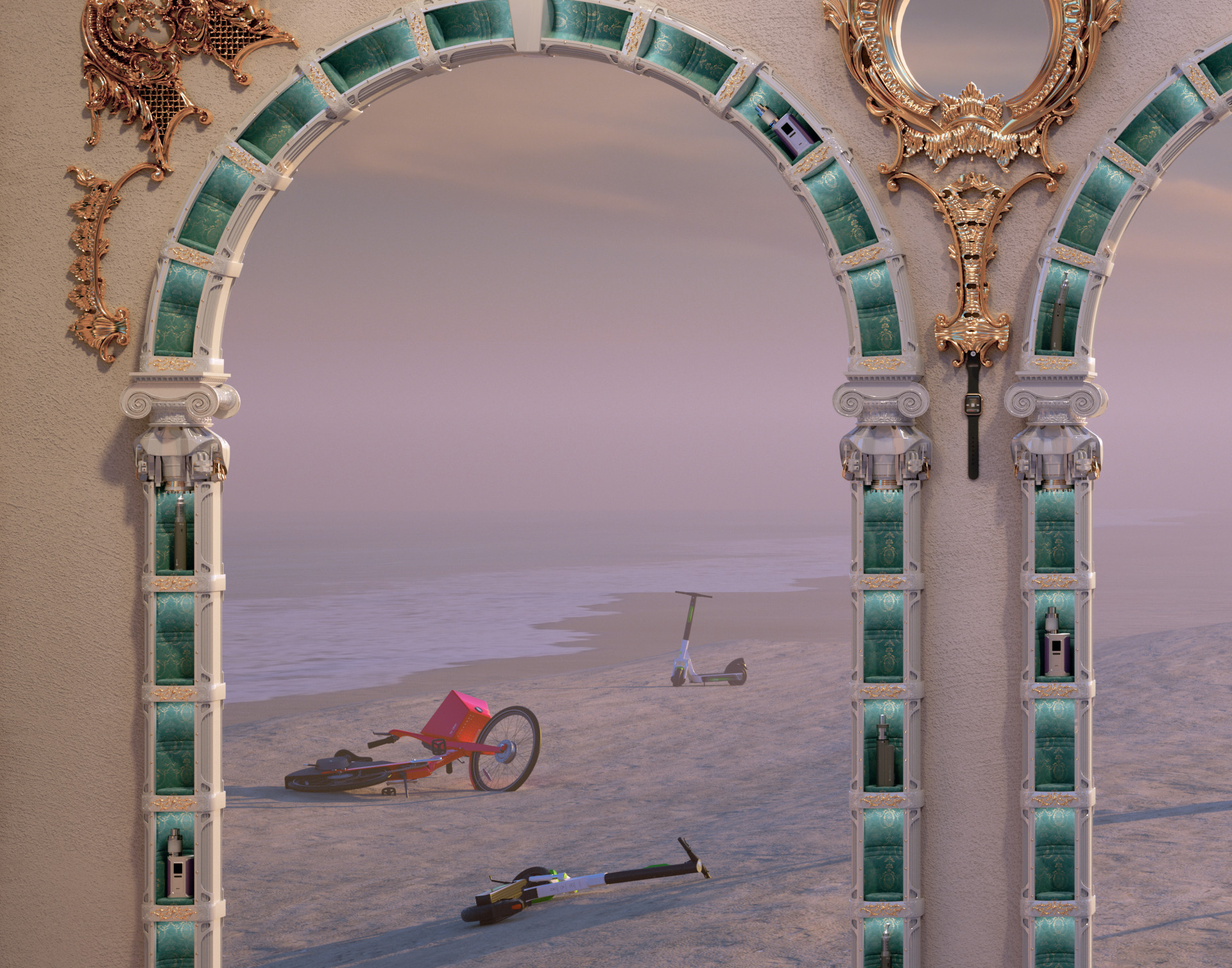
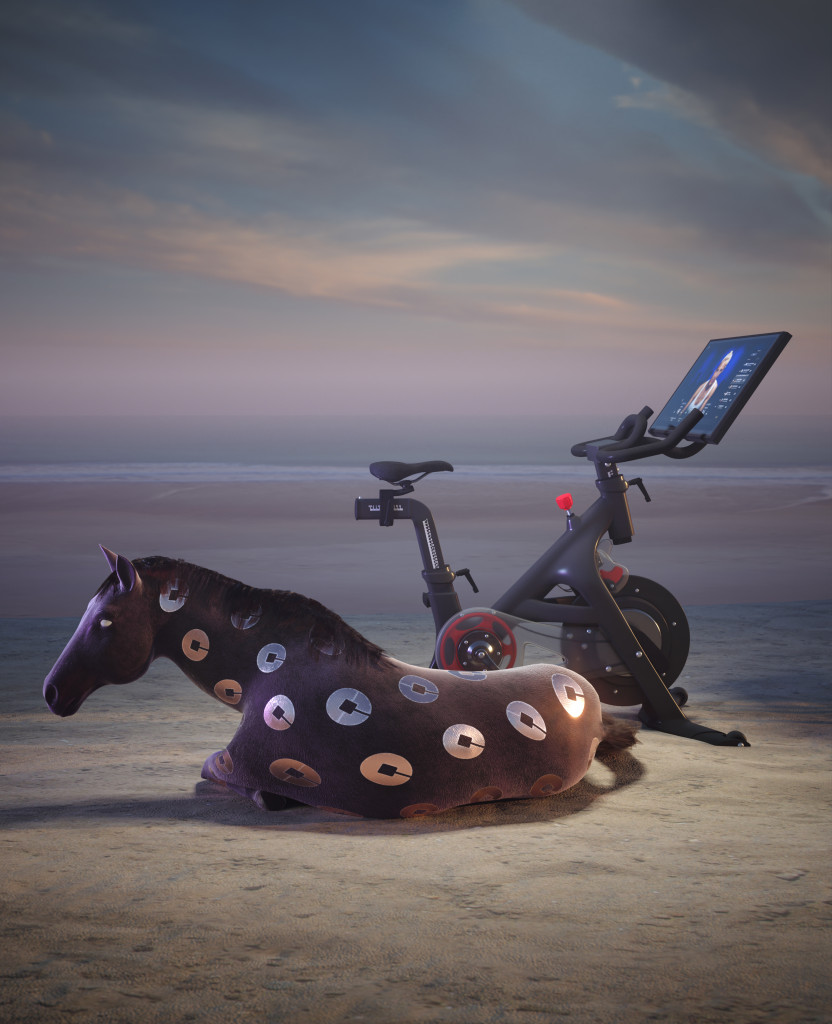
A tall screen in a nineteenth-century mansion shows a horse ambling toward a waiting spaceship. This animation is part of Jonathan Monaghan’s multimedia installation Move the Way You Want (2022), on view at the Phillips Collection in Washington, D.C., through December 31. The horse, covered with Uber logos, emerges from a Peloton’s screen, and walks along a beach until it reaches a baroque flying saucer. The spaceship’s interior looks like a posh coffee shop. Digital prints with other views of the beach, littered with Pelotons and Lime scooters, line the gallery’s walls. Monaghan’s work layers digital depictions of mass-marketed aspirational goods and services over genuine nineteenth-century luxury. The site-specific installation was created for what was once the dining room of Duncan Phillips, heir to a fortune made in glass and steel. The former private mansion has been open to the public for a century now, and lays claim to the title of America’s first museum of modern art. Move the Way You Want—which depicts the outputs of a saturated upscale consumer market, scattered as litter on a surreal, deserted beach—is particularly well-suited to this space.
These things are not true luxury items, but they gesture toward luxury in a very particular way.
The exhibition is part of the Phillips’s Intersections program, which invites contemporary artists to make work in dialogue with the collection. Monaghan’s eerie horse responds to a pair of equestrian paintings that hang in the dining room gallery: Giorgio de Chirico’s Horses (1928), and Théodore Géricault’s Two Horses (ca. 1808–09). Both are small, and each features two horses, one brown and one white. De Chirico’s horses are on a beach, and one is galloping over fallen marble columns that appear to be Roman ruins. At first the connection between the older paintings and Monaghan’s equestrian video seems superficial. I’m reminded of Jack Donaghy’s line from “30 Rock”: “We know what art is: it’s paintings of horses!” But there is more going on. Horses are an art-historical status symbol, included in portraits to underscore the power of the figures astride them. But none of the horses in the paintings by de Chirico and Géricault have riders. The Lime scooters, bikes, and Pelotons on the beach are missing their riders as well. They’re consumer goods without consumers.
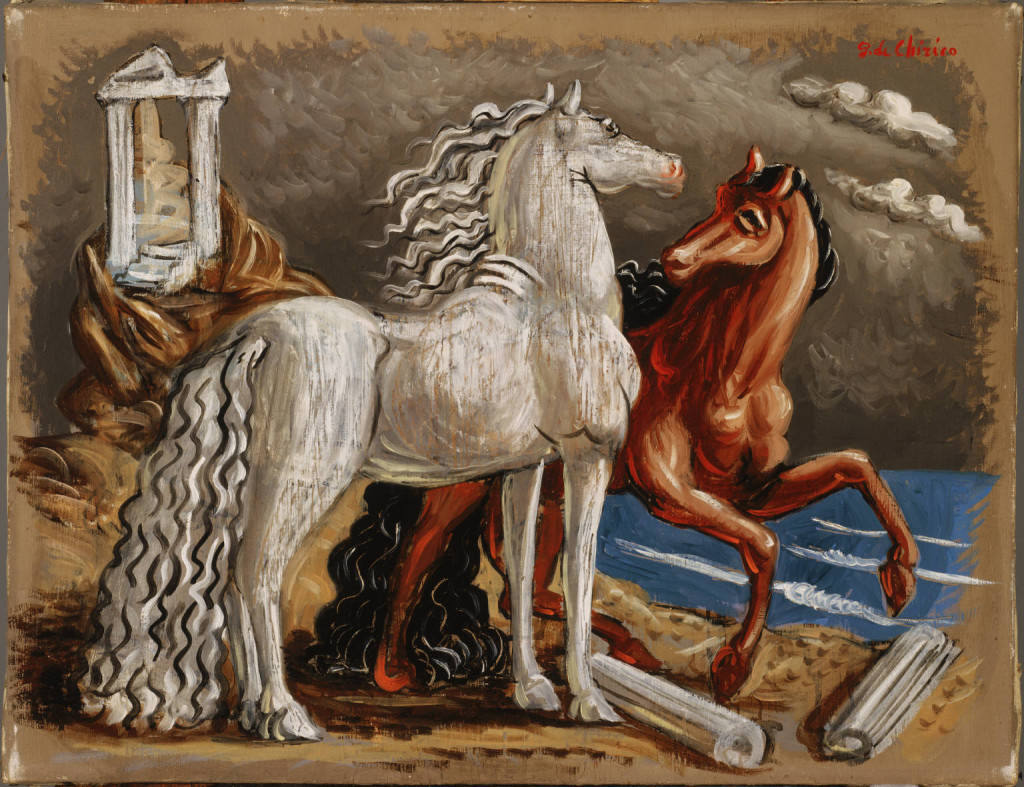
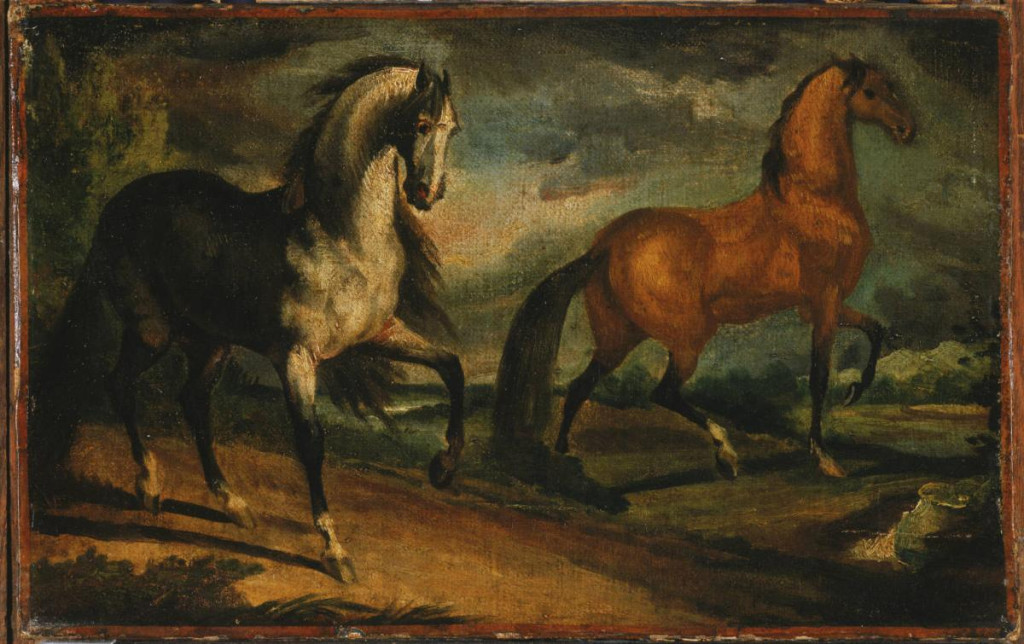
Monaghan, in this and other works, uses a distinctive vocabulary of opulent objects assembled in strange scenarios. Marble busts intermingle with tufted velvet upholstery. Columns and arches are adorned with excessive golden ornamentation. Wandering animals and advanced technology are recurring motifs, too: in Move the Way You Want the exercise gear and the minimal coffee shop blend the familiar with the surreal. These things are not true luxury items, but they gesture toward luxury in a very particular way. They’re what writer and consultant Venkatesh Rao would call “premium mediocre.” They represent goods and services that create “an aura of exclusivity without actually excluding anyone.” Premium mediocre is the slight veneer of posh without the exclusion, like Amazon Prime, Starbucks’ Chestnut Praline Latte, grass-fed beef, Comfort+. You get the idea. It is distinct from older forms of petit bourgeois taste, because it reflects a unique twenty-first century condition of performative consumption that persists despite the evaporation of a stable middle class. Rao theorizes that premium mediocre signifiers are a way of buying time and projecting an image of taste and luxury, all while waiting for some kind of genuine windfall to push the consumer onto the winning side of the yawning inequality gap. “The essence of premium mediocrity,” writes Rao, “is being optimistically prepared for success by at least being in the right place at the right time, at least for a little while, even if you have no idea how to make anything happen during your window of opportunity.”
Premium mediocrity can be self-aware; it can contain its own critique.
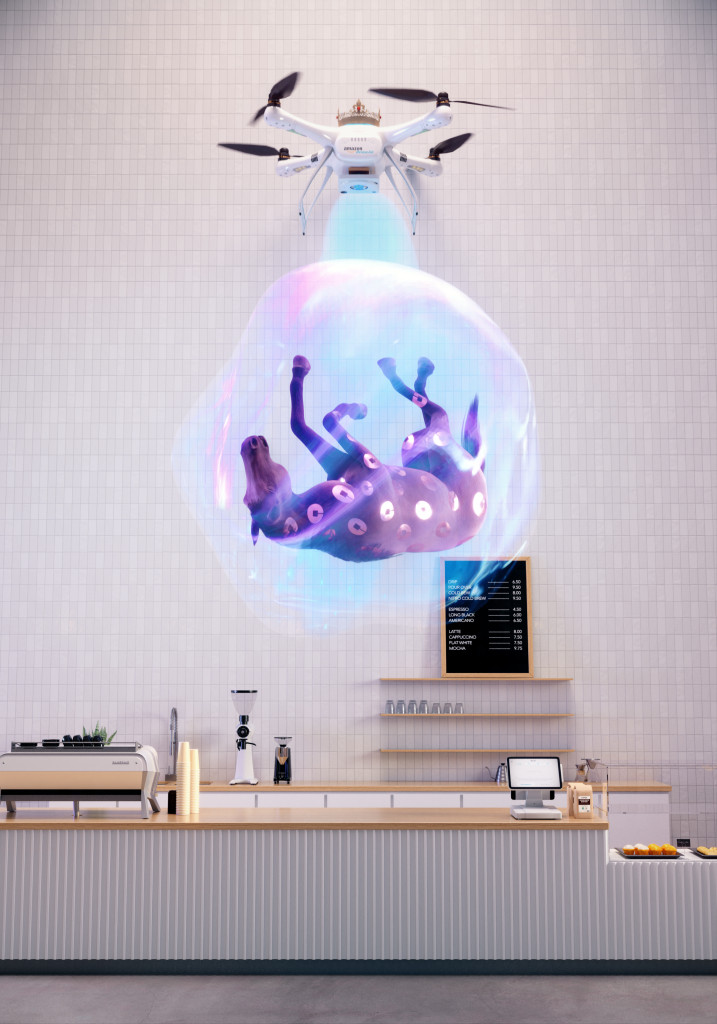
One way to come by such luxury might be luck on crypto markets. Crypto itself is premium mediocre, and so are NFTs. Rao defined the term in 2017, before NFTs had entered the popular consciousness, but his description of an aura of exclusivity that doesn’t actually exclude anyone perfectly sums up the NFT bull market bloat. The rarity of NFTs is an article of faith that many people simply do not accept. The unique contract associated with an infinitely copyable image is a brand of exclusivity that requires explanation and initiation to buy into. When NFT collections become extremely expensive, derivative projects pop up to appeal to the priced-out masses. A paradoxical mantra for the NFT bull market could be: Enough exclusivity for everybody.
Monaghan, not surprisingly, has sold digital work as NFTs. Premium mediocrity can be self-aware; it can contain its own critique. Rao readily admits that his own blog is premium mediocre. In Monaghan’s installation the premium mediocre objects on the beach are like goods strewn from the wreck of a container ship. Separated from their usual environments, distant from people, they shift from positional goods to trash without decaying at all. The horse wanders the landscape, and while it doesn’t exactly ponder the waste and absurdity, it gives the viewer a vantage point. The inclusion of the animal is an easy connection to the de Chirico and the Géricault. But rather than view it through the frame of the historical works, it’s helpful to reverse this and examine the old horse paintings in light of Monaghan’s tableau. The small de Chirico hangs neatly above the fireplace. Frankly, it’s underwhelming. If you know the artist, it’s likely because of his surreal and desolate cityscapes with long shadows, colonnades in extreme perspective, and piazzas with unnerving statues. The horses, by comparison, are pretty tame. The Phillips Collection website even has a blog post from 2011 with quotes from art dealers and museum directors expressing their disappointment in the picture. The Géricault—from the romantic master who painted The Raft of the Medusa, severed heads of torture victims, and portraits of the insane—is similarly quotidian.
Sharing the room with Monaghan’s installation, the de Chirico and the Géricault begin to look like more accumulated, repetitive luxury objects—rather than pictures with stories to tell. The paintings are from different centuries, yet they’re weirdly similar, right down to the number, color, and relative position of the horses. These are not exemplary works of either artist, but they are examples of their work nonetheless. Duncan Phillips was able to check de Chirico and Géricault off his list and hang the pieces in the dining room. Like a Lime scooter or a minimal coffee shop, the unremarkable paintings are a premium mediocre art experience, now available for all to enjoy in the museum. A museum that was once a private mansion is, on one hand, a triumph for public access to art. On the other hand, in the glow of Monaghan’s unnerving video, these horse pictures look like little more than abandoned status objects.
Kevin Buist is a design strategist, curator, and writer based in Grand Rapids, Michigan.
